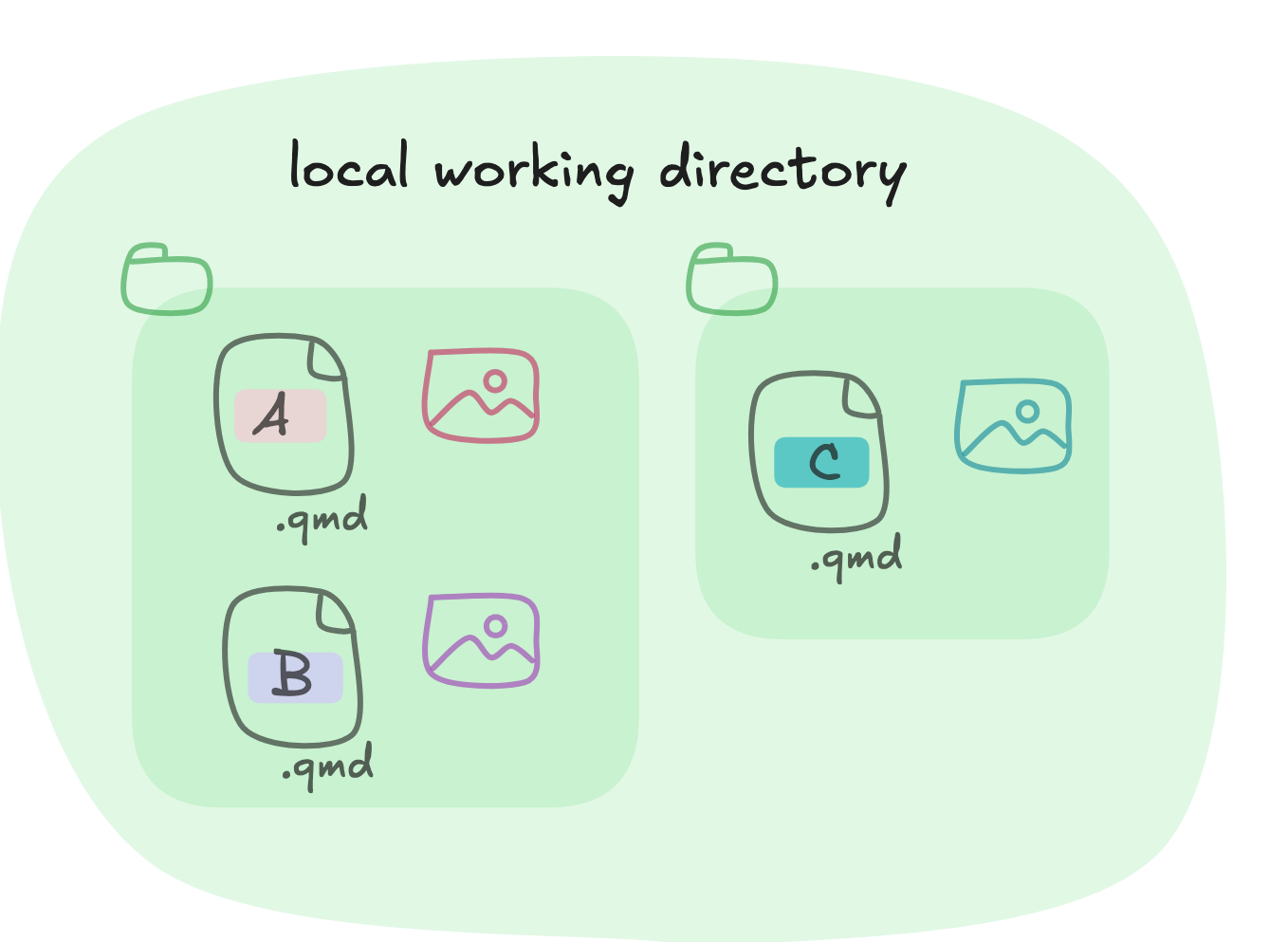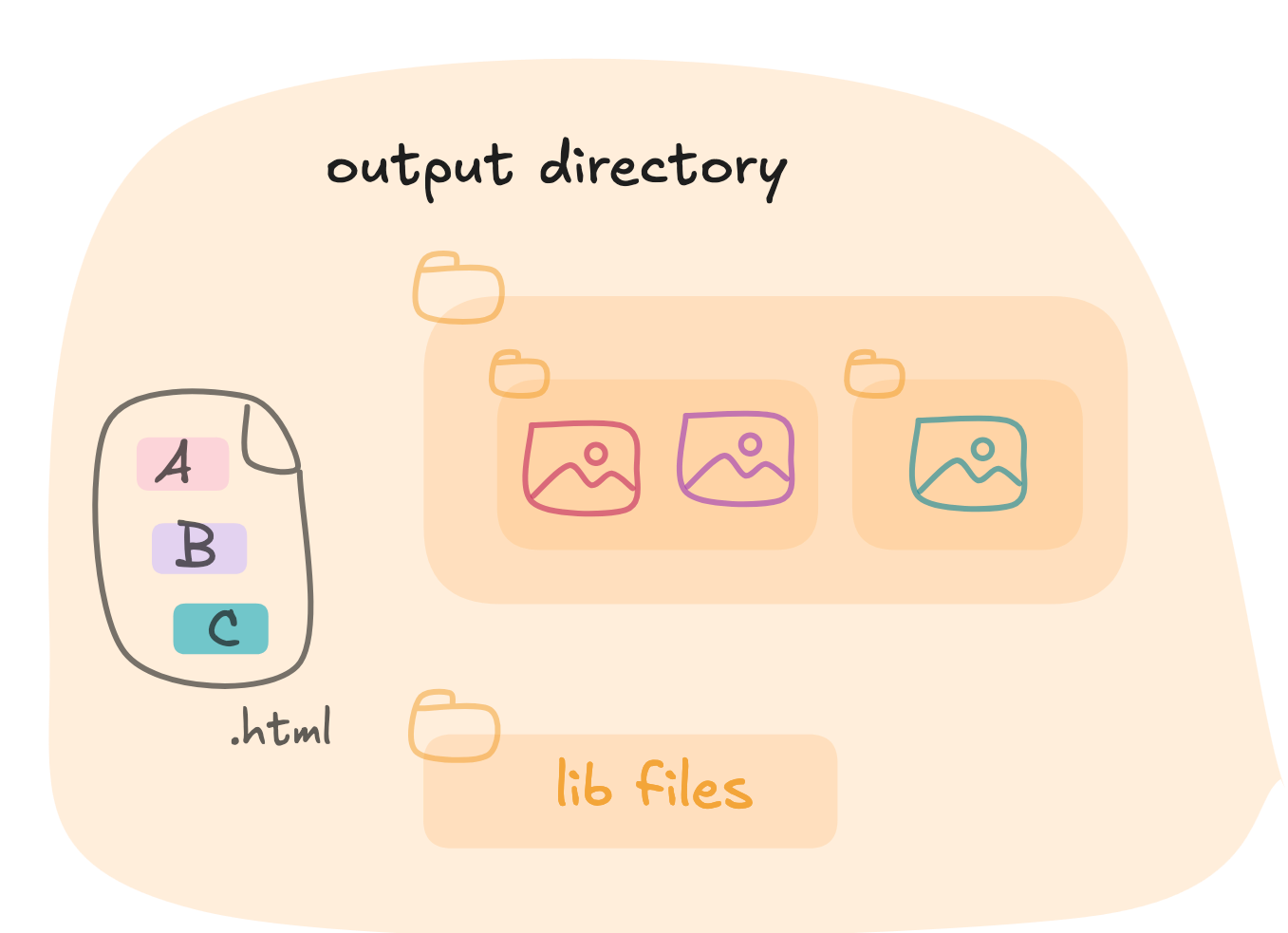How do I use {squash}?
This is a basic example of combining qmd files into a single html presentation.
Let’s say we have two folders with three quarto revealjs presentation files, alongside their images.

Example files are stored in
system.file("courses", "M01", package = "squash")
I can render a combined html presentation from these quarto files by executing the following command:
library(squash)
qmds <- c("path/to/A.qmd", "path/to/B.qmd", "path/to/C.qmd")
html_output <- compile_qmd_course(
vec_qmd_path = qmds,
output_dir = file.path(tmp_course_path, "complete"),
output_html = "complete_course.html"
)Tada, I now have a new folder, with my complete html presentation!

Inside this output directory you can find the following files:
- an html file: the complete revealjs presentation, with content from all input quarto files
- an image folder: it will store all images (graph output, png, jpg, etc) organised in sub-folders mimicking the original file tree
- a companion folder: like a classic quarto rendering, it will store the necessary libraries to read the revealjs html output
A note on compilation
File content will be included in the same order as provided to
compile_qmd_course.squash can work with quarto files both inside and outside of quarto project, you can even mix them in the same compilation.
In case of failure to render some files, squash will erase all temporarily created files before exiting.
To see a progress bar as compilation is running, you can wrap the function call inside a
progressr::with_progress(). You can also set it in the console withprogressr::handlers(global = TRUE).Image files are stored in sub-folders to prevent overriding files with identical names across different original folders. For instance, if two presentations use a
logo.pngthat link to two different images, it will be correctly handled in the compiled html.
